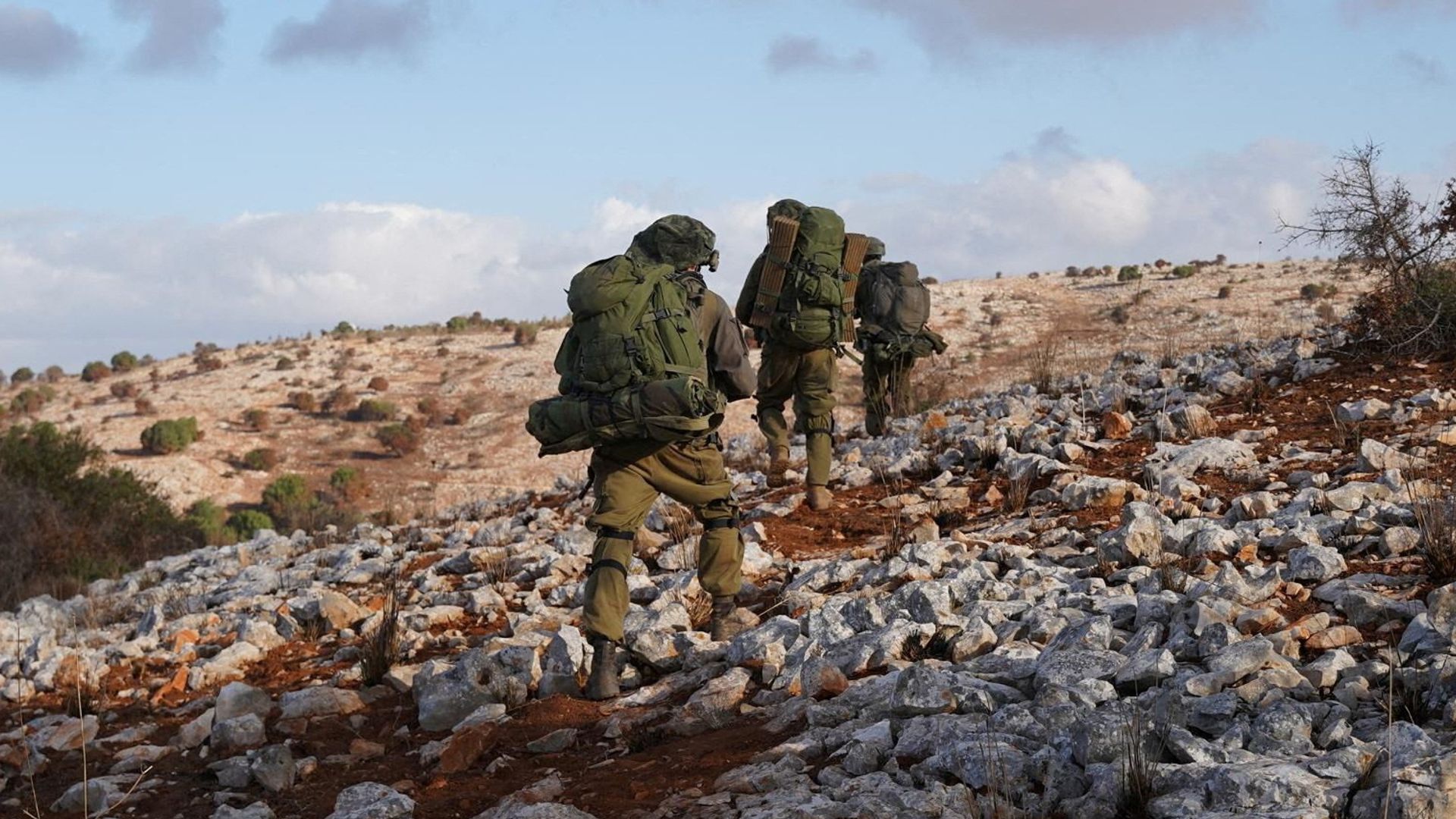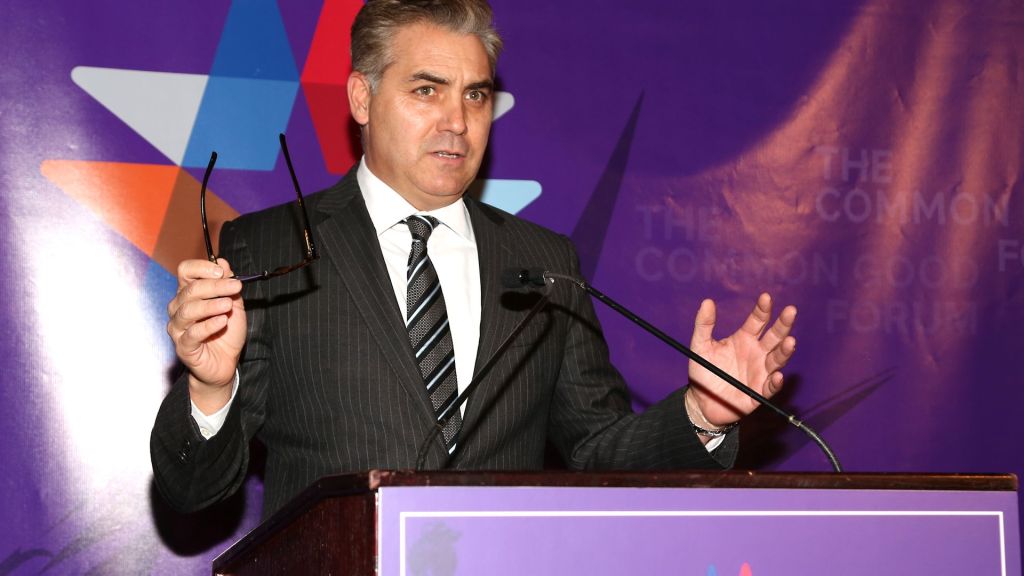
THE LIFE EXPECTANCY FOR HEZBOLLAH LEADERS IS GETTING PRETTY SHORT THESE DAYS. IN THE EARLY MORNING HOURS OF OCTOBER FOURTH, ISRAEL STRUCK SEVERAL BUILDINGS NEAR BEIRUT, LEBANON REDUCING THEM ALL TO RUBBLE.
THE TARGET OF THE STRIKE WAS HASHEM SAFIEDDINE; THE COUSIN OF AND APPARENT SUCCESSOR TO HASSAN NASRALLAH, HEZBOLLAH’S FOUNDER AND LONGTIME LEADER WHO HIMSELF WAS KILLED LESS THAN A WEEK PRIOR IN ANOTHER MASSIVE ISRAELI AIRSTRIKE.
SAFIEDDINE WAS REPORTEDLY MEETING WITH WHAT’S LEFT OF HEZBOLLAH’S SENIOR LEADERSHIP. IT WASN’T IMMEDIATELY CLEAR BEFORE PUBLISH TIME WHETHER ANYONE SURVIVED THE STRIKE.
Jon Molik
Israel is demonstrating what almost absolute intelligence understanding of another organization looks like.
JON MOLIK IS AN ACTIVE US INTELLIGENCE OFFICER.
Molik
This is an interesting scenario because Hezbollah is, without a doubt, reeling. It’s true to say that at times if you just cut off the head of an organization, if the organization is strong enough, another person can find his way into the leadership position and the organization can kind of stumble forward and regain its feet, if you will. This is not the case for Hezbollah right now.
IN ADDITION TO TARGETING HEZBOLLAH’S LEADERSHIP, THE IDF IS ALSO GOING AFTER THE GROUP ON THE GROUND IN SOUTHERN LEBANON. THIS MARKS THE FOURTH TIME ISRAEL INVADED SOUTHERN LEBANON. BUT MOLIK THINKS ISRAEL IS IN A MUCH STRONGER POSITION THIS TIME, AND ALL THE WORK THE IDF DID TO PREPARE THE BATTLESPACE SEEMS TO BE PAYING OFF.
Molik
There’s indirect fire attacks, and they’re throwing some squad level elements at the Israelis. But, you know, they just don’t have a central command from Beirut right now. And it’s going to be, I hate to use the word ‘easy,’ but it isn’t going to be as challenging for Israel to conduct the operations in southern Lebanon against these Hezbollah fighters– up to the Latani River– this time as it was a few decades ago. Because Hezbollah is just not in a place to respond in any organized way.
NOT ONLY IS ISRAEL IN A STRONGER POSITION THIS TIME AROUND IN TERMS OF A CONFLICT WITH HEZBOLLAH IN SOUTHERN LEBANON–THINK SIGNAL INTELLIGENCE AND HUMAN INTELLIGENCE AS WELL–BUT ISRAEL ALSO WON’T BE DEALING WITH MANY OF THE SAME CONSTRAINTS THAT THE BATTLESPACE IN GAZA PRESENTED.
SO, OBVIOUSLY, THIS IS THE MIDDLE EAST. HERE’S ISRAEL, AND HERE’S GAZA. GAZA’S PRE-WAR POPULATION WAS MORE THAN 2 MILLION PEOPLE, RIGHT AROUND 2.3 MILLION. AND THEY WERE ALL PACKED INTO A VERY SMALL SPACE. ISRAEL HAD BLOCK OFF OR CLOSED ALL OF THE BORDER CROSSINGS FROM GAZA INTO ISRAEL, AND EGYPT CLOSE ITS BORDER WITH GAZA AS WELL.
SO YOU JUST HAD A LOT OF POTENTIAL FOR HUMAN COLLATERAL DAMAGE IN THE AREA. THAT REALLY CONSTRAINED WHAT ISRAEL WAS ABLE TO DO. THERE WAS A LOT OF URBAN WARFARE, BUILDING-TO-BUILDING FIGHTING BETWEEN ISRAEL AND HAMAS, OBVIOUSLY THE UNDERGROUND TUNNELS WERE A HUGE CONCERN.
SO THE FIGHTING IN GAZA IS A DIFFERENT STYLE OF FIGHTING THAN WHAT ISRAEL MIGHT BE FACING IN LEBANON. THERE ARE OPEN FIELDS, IT CERTAINLY ISN’T AS DENSELY POPULATED IN SOUTHERN LEBANON AS IT WAS IN GAZA. IT’S JUST A DIFFERENT STYLE OF FIGHTING.
NOW LET’S LOOK AT LEBANON. THIS YELLOW LINE RIGHT HERE IS THE LITANI RIVER–YOU HEARD JON MOLIK MENTION THE LITANI RIVER. ISRAEL WANTS TO CLEAR HEZBOLLAH FIGHTERS IN THIS 30KM RANGE (18.6 MILES) BETWEEN THE NORTHERN BORDER OF ISRAEL AND THE RIVER.
THAT IS ENOUGH ROOM MOST OF HEZBOLLAH’S ROCKETS AND ARTILLERY WOULD BE FAIRLY INEFFECTIVE ATTACKING ISRAEL’S NORTH, WHICH IS WHY MOLIK SAYS IT’S WORTH TAKING THE TIME TO DO THE OPERATION RIGHT, AND NOT RUSH ANYTHING.
Ryan Robertson
For people watching movies and TV, they hear a phrase, ‘slow is smooth, smooth is fast.’ Is that the similar kind of situation here? by Israel taking it slow now, does that mean that they’ll be able to get the operation done quicker than if they just move really quick right now and then they’re all of a sudden caught in a long, drawn-out operation? Is that kind of the thinking?
Jon Molik
Yeah, that’s a fair analogy because the whole purpose of the operation isn’t to seize territory. For example, that’s what Russia wanted to do initially. They wanted to seize Kiev. It wasn’t about killing every single Ukrainian soldier and taking every single town on the way there.
This operation in Israel is different. It’s not about seizing territory. It’s about literally taking care of, eliminating– whatever the language you want to use–every single munition point and every single soldier. If they take it slowly now, and they’re able to verify and validate they’ve removed all of those locations and all of those personnel, they can head back to Israel and open up a clear space for those 60-ish thousand Israelis to return to the north. And then Hezbollah is going to have to take years and years and years in order to reestablish itself. And potentially Israel isn’t going to let that happen like they did before. That’s kind of for another discussion, but at least right now, Israel wants to make sure that there is zero Hezbollah left in any place south of the Litani River. So it’s a good analogy to say ‘slow is smooth and smooth is fast’ in this instance.
AND IF ISRAEL IS SUCCESSFUL AT PUSHING HEZBOLLAH BACK, AND MAYBE DISMANTLING THE ORGANIZATION, MOLIK SAYS THAT COULD OPEN UP ROOM FOR LEBANON’S OFFICIAL ARMY TO RETURN TO THE REGION AND MAYBE HELP PREVENT ANOTHER IRANIAN PROXY FROM SETTING UP SHOP
FOR STRAIGHT ARROW NEWS, I’M RYAN ROBERTSON. FOR MORE OF OUR REPORTING ON THE WAR BETWEEN ISRAEL AND IRAN’S AXIS OF RESISTANCE BE SURE TO DOWNLOAD THE STRAIGHT ARROW NEWS APP OR LOG ON TO SAN.COM











